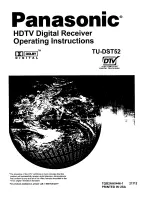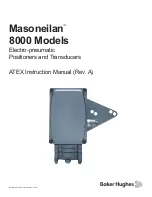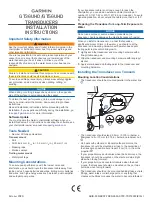
30
31
English
English
Signal Relation
Sets the squelch rule for signal reception when using DTMF and CTCSS/DCS.
AND
: the DTMF
and
the CTCSS/DCS codes of the received signal have to match
the own settings for the squelch to open.
OR
: the DTMF
or
the CTCSS/DCS code of the received signal have to match the
own setting for the squelch to open.
Call 1/2
- DTMF call 1/2
For each channel, two DTMF calls can be programmed. Select out of the list of pro-
grammed encodes (see
DTMF / Autodial Memory
).
PTT-ID
With PTT-ID a DTMF code can be transmitted automatically when the PTT key is
pushed and/or released. The setting Beginning-Of-Transmission transmits the
BOT
code when pushing the PTT key. The selection End-Of-Transmission will transmit the
EOT
code when releasing the PTT key and
BOTH
will transmit the BOT and EOT
code. Go to
DTMF / Encodes
for the settings.
Furthermore, the functions
Reverse
and
Talk Around
(see multi function keys) can be
individually assigned to each channel.
Function Setup
These basic settings concern all programmed channels.
Time Out Timer - TOT
To prevent overlong blockage of the channel and overheating of the battery pack
(transmission generates heat), use the time-out-timer function TOT. After expiration
of the TOT time (5-600s in 15-second-steps), the radio automatically stops transmis-
sion. To be able to transmit again, the PTT key needs to be released and pushed
again.
TOT Warning Time
Prior to expiration of the TOT time a warning tone is emitted. The TOT warning time
can be set between 5-10 seconds.
SQ Level 0-9 - squelch
A signal must have a certain strength to pass the squelch and be audible. At the level
0 the squelch is deactivated and the typical frequency noise is audible when no signal
is present.
At the highest level (9), a signal must be very strong to pass the squelch. Most signals
will be filtered-out.
SOFTWARE FUNCTION
The following settings are managed by the optional software. T-UP32 PMR is for pro-
gramming the PMR radio version. T-UP32 COM and COMII are for the commercial
radio versions UHF and VHF.
The functions are listed in the order as they appear in the software.
Channel Information
These settings are available for each channel.
RX Freq -
reception frequency /
TX Freq
- transmission frequency
For the PMR version, only the eight designated PMR frequencies can be selected.
No other frequencies can be programmed.
In the COM versions, the frequency can be manually programmed according to the
assigned frequencies of the licence.
CTCSS/DCS reception- (
Decode
) and transmission-frequency code (
Encode
)
A CTCSS/DCS code can be assigned to each tx and rx frequency.
In total, there are 50 CTCSS und 232 DCS codes (116 DCS-N and 116 DCS-I) avai-
lable.
Tx Power -
switch tx-power HIGH/LOW
The tx-power settings LOW and HIGH can be assigned individually for each channel.
Scan Add/Del -
scan
Activates/deactivates a channel for the scan function. It adds the channel to the scan
list or deletes the channel from it.
Channel Spacing
N/M/W -
bandwidth
In the PMR version the bandwidth is fixed to 12.5 kHz.
For the commercial versions UHF-COM and VHF COM, the bandwidths
N
(12.5 kHz),
M
(20 kHz) and
W
(25 kHz) are available. Please check your licence which value has
to be set for your radio.
BCL
- busy channel lockout
Transmission is blocked if a signal is present on the selected channel.
Option Signaling
- DTMF
Activates/deactives the DTMF calling function for channel. For DTMF to work the key
assignment and the DTMF parameters have to be programmed.
tecom-lc_manual_4mod:Layout 1 2/16/2016 1:44 PM Page 30














































